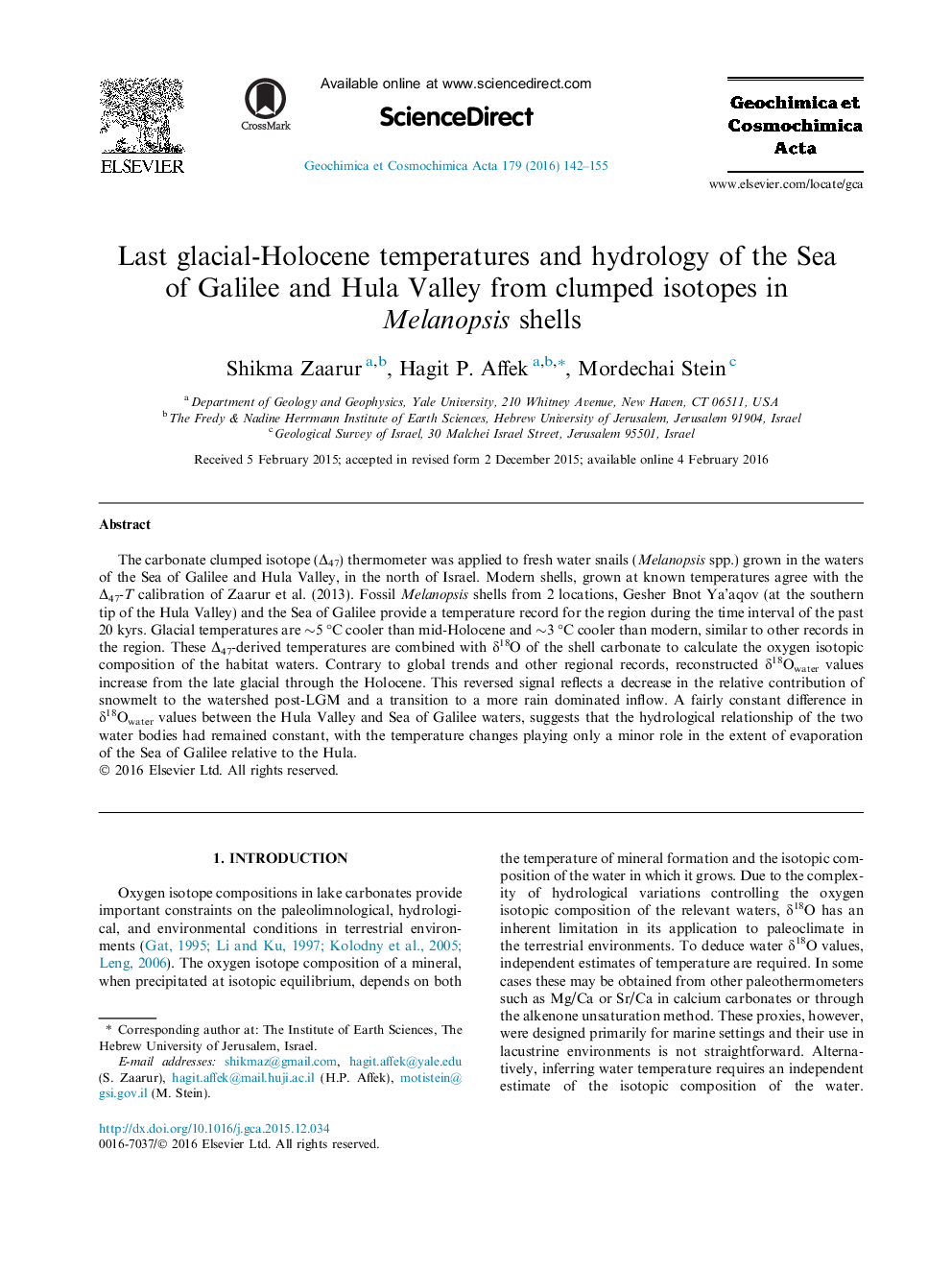| کد مقاله | کد نشریه | سال انتشار | مقاله انگلیسی | نسخه تمام متن |
|---|---|---|---|---|
| 6437589 | 1637978 | 2016 | 14 صفحه PDF | دانلود رایگان |

The carbonate clumped isotope (Î47) thermometer was applied to fresh water snails (Melanopsis spp.) grown in the waters of the Sea of Galilee and Hula Valley, in the north of Israel. Modern shells, grown at known temperatures agree with the Î47-T calibration of Zaarur et al. (2013). Fossil Melanopsis shells from 2 locations, Gesher Bnot Ya'aqov (at the southern tip of the Hula Valley) and the Sea of Galilee provide a temperature record for the region during the time interval of the past 20 kyrs. Glacial temperatures are â¼5 °C cooler than mid-Holocene and â¼3 °C cooler than modern, similar to other records in the region. These Î47-derived temperatures are combined with δ18O of the shell carbonate to calculate the oxygen isotopic composition of the habitat waters. Contrary to global trends and other regional records, reconstructed δ18Owater values increase from the late glacial through the Holocene. This reversed signal reflects a decrease in the relative contribution of snowmelt to the watershed post-LGM and a transition to a more rain dominated inflow. A fairly constant difference in δ18Owater values between the Hula Valley and Sea of Galilee waters, suggests that the hydrological relationship of the two water bodies had remained constant, with the temperature changes playing only a minor role in the extent of evaporation of the Sea of Galilee relative to the Hula.
Journal: Geochimica et Cosmochimica Acta - Volume 179, 15 April 2016, Pages 142-155